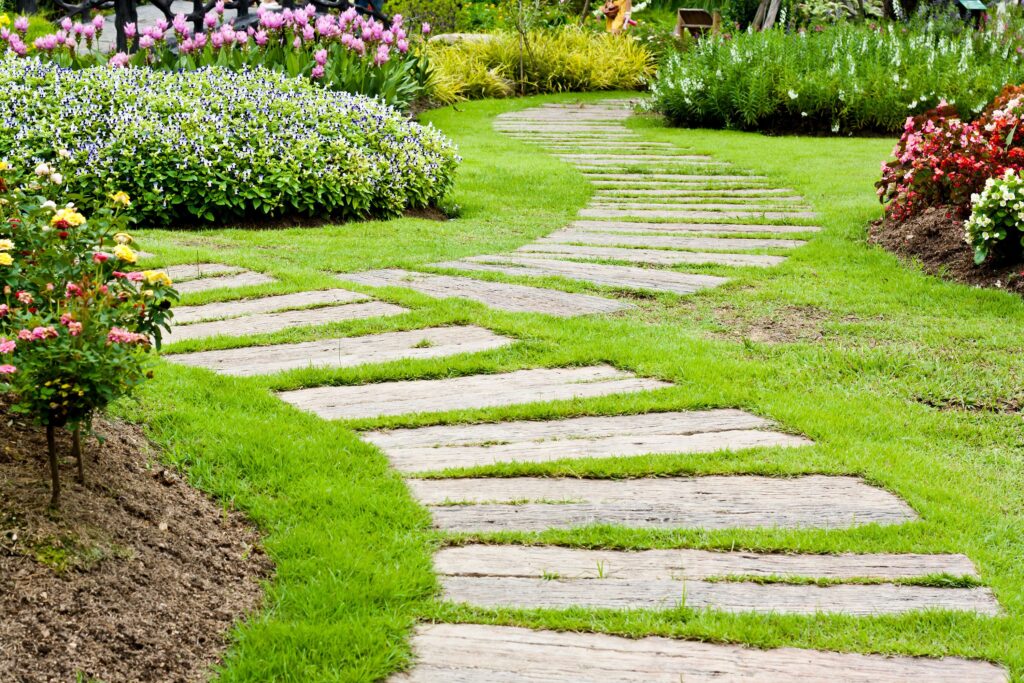
Creating a garden path is not just about practicality — it's about enhancing the beauty, flow, and function of your outdoor space. But with so many options available
Creating a garden path is not just about practicality — it’s about enhancing the beauty, flow, and function of your outdoor space. But with so many options available, one crucial question arises: What is the best material for a garden path in Washington? At Driveways Washington, we help homeowners across the UK choose the right materials based on aesthetics, budget, drainage, and maintenance needs. We’ll explore the top garden path materials and the pros and cons of each so you can make the best choice for your landscape.
Why Choosing the Right Path Material Matters
A garden path isn’t just a walking surface. It defines structure, guides foot traffic, adds visual interest, and can even influence how much upkeep your garden requires. Your choice of material affects:
-
Appearance and style
-
Function and durability
-
Drainage and safety
-
Installation costs and ease
-
Maintenance over time
Different materials suit different garden styles — from traditional cottage gardens to sleek, modern landscapes.
1. Gravel – Flexible and Affordable
Best for: Informal, rustic, or cottage-style gardens
Pros:
-
Low cost
-
Excellent drainage
-
Easy to install
-
Available in a variety of colours and sizes
Cons:
-
Can shift underfoot
-
Needs edging to stay contained
-
Not ideal for wheelchairs, prams, or high heels
Driveways Washington Tip: Use a weed membrane underneath and compact the gravel for stability. Gravel is also great for areas where water drainage is important.
2. Concrete Paving Slabs – Durable and Versatile
Best for: Formal paths, modern designs, or high-traffic areas
Pros:
-
Strong and long-lasting
-
Easy to clean
-
Available in many shapes and finishes
-
Stable surface for walking
Cons:
-
Can be expensive depending on the style
-
May require a concrete base and mortar
-
Non-permeable unless specifically designed
Concrete slabs offer a timeless and neat finish. Choose textured or riven styles for a more natural look.
3. Brick – Classic and Charming
Best for: Period homes, traditional gardens, and formal layouts
Pros:
-
Attractive and full of character
-
Can be laid in creative patterns (herringbone, basket weave)
-
Reclaimed bricks offer eco-friendly options
Cons:
-
Requires a solid, well-drained base
-
May become slippery in wet weather
-
Weeds can grow between joints
Brick paths provide a warm, rustic feel — perfect for charming English gardens.
4. Natural Stone – Elegant and Timeless
Best for: Premium gardens, traditional or formal landscapes
Pros:
-
Beautiful natural textures and colours
-
Extremely durable
-
Adds property value
Cons:
-
High upfront cost
-
Requires professional installation
-
Can be heavy and hard to cut
Popular choices include sandstone, slate, and limestone. Each offers a distinct character, especially when aged.
5. Stepping Stones – Minimal and Whimsical
Best for: Informal paths or to break up lawns and gravel
Pros:
-
Requires fewer materials
-
Fun and creative layouts
-
Suitable for small or winding paths
Cons:
-
Gaps between stones may be tricky to walk on
-
Not great for accessibility
You can use flagstones, reclaimed slabs, or even DIY concrete stepping stones for a creative look.
6. Wood and Timber – Natural and Warm
Best for: Woodland gardens or rustic designs
Pros:
-
Soft underfoot
-
Blends into natural surroundings
-
Reclaimed sleepers or decking planks can be reused
Cons:
-
Can rot or become slippery when wet
-
Needs regular maintenance or treatment
Timber sleepers laid flat make excellent stepping-style paths with a natural finish.
7. Bark or Mulch – Soft and Budget-Friendly
Best for: Eco gardens, play areas, or temporary paths
Pros:
-
Cheap and biodegradable
-
Easy to install
-
Soft underfoot and safe for children
Cons:
-
Needs topping up regularly
-
Decomposes over time
-
Not suitable for heavy traffic or wet zones
Mulch paths are ideal for vegetable gardens or low-impact zones but need a proper edging system to contain the material.
8. Resin-Bound Gravel – Stylish and Low-Maintenance
Best for: Modern gardens with a sleek finish
Pros:
-
Smooth, stable surface
-
Permeable and SuDS compliant
-
Low maintenance
Cons:
-
Higher installation cost
-
Requires professional fitting
It combines the charm of gravel with the strength of resin, giving a modern twist to traditional paths.
How to Choose the Best Material for Your Garden
When deciding on the best garden path material, consider the following:
| Consideration | What to Think About |
|---|---|
| Budget | Gravel and mulch are cheaper; stone and resin are pricier |
| Drainage | Choose permeable materials to avoid planning issues |
| Style | Match the material with your house and garden theme |
| Foot Traffic | Use harder materials in high-use areas |
| Accessibility | Choose flat, slip-resistant surfaces for safety |
| DIY or Pro Install | Some materials require expertise, others suit DIY projects |
Final Thoughts from Driveways Washington
So, what’s the best material for a garden path? There’s no one-size-fits-all answer — it depends on your personal taste, usage, budget, and garden design. Gravel is great for affordability and drainage. Stone offers timeless beauty. Brick and concrete balance charm and durability. At Driveways Washington, we help you choose and install the right garden path material that fits both your landscape and your lifestyle. Whether you’re creating a winding cottage path or a modern walkway, our team ensures it’s built to last.





